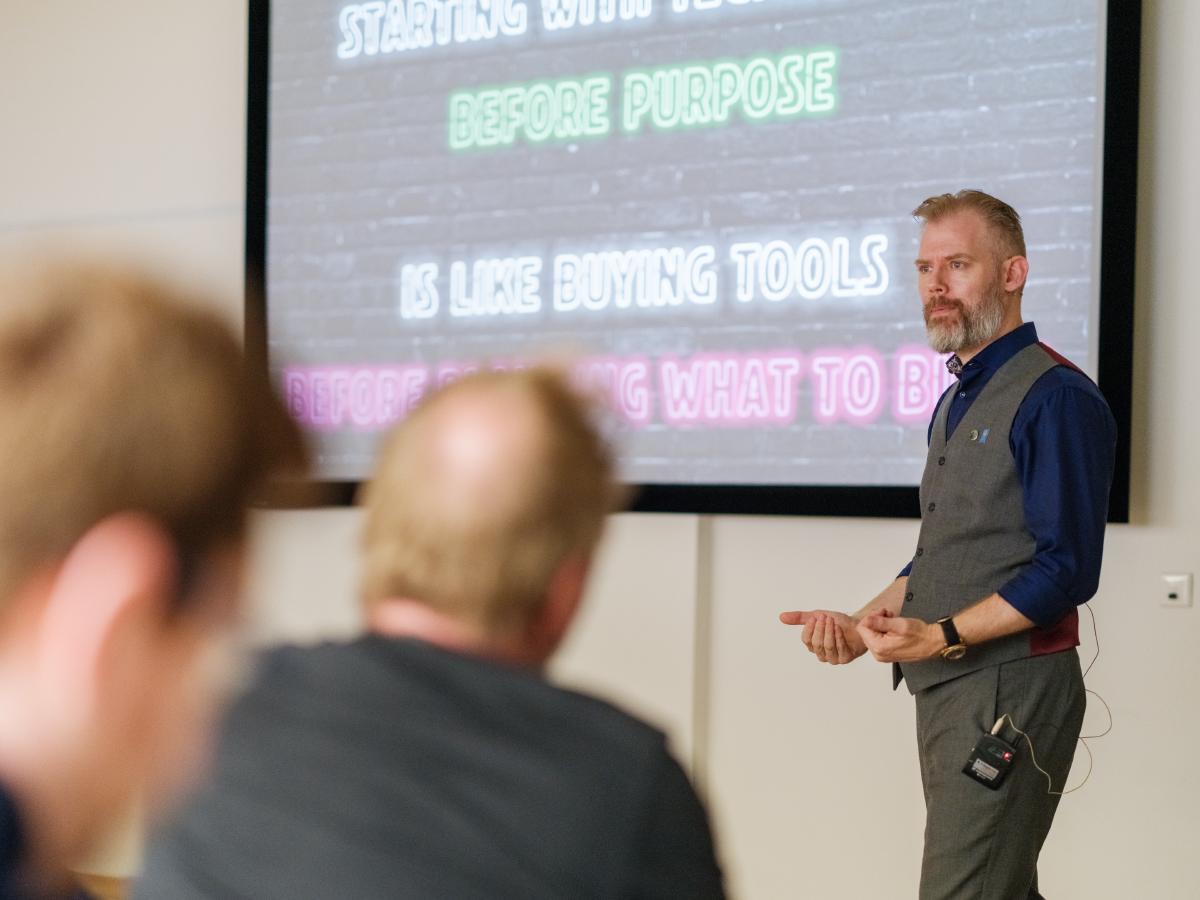In 2010, researchers at The Catholic University in Washington D.C. studied the attention span of lecture attendees. They found that attention lapses occurred as early as 30 seconds into a lecture - what they called a ‘settling-in’ period. Yet somehow this finding has been twisted into presentation lore: hook your audience in 30 seconds or lose them forever. This study is widely misunderstood, but the spirit of starting strong still matters.
While I don’t agree on the “30 second rule” per se, I think it serves a good purpose. In order to convince people why they should stay in your session, we need to show value - and do so sooner, rather than later. So how do we not only get the attention of our audience, but also keep it? Let me start with what doesn’t work, then show you what does.
What NOT to Do: The Biography Trap #
Let’s start with what in my opinion is the absolutely worst way of opening:
“Hello everyone, my name is Alexander, I am a consultant, working in the field of data since 1997. I hold certifications from Microsoft, Oracle, Cisco, HP, blah, blah, blah”.
In my experience, this won’t work - simply because the audience isn’t interested in who you are at this point in time. They need to be made to feel safe that the next hour (or 45 minutes, or however long the session is) is going to be worth their time, and the speaker droning on about themselves for several minutes is not likely to be very engaging.
Lead with Value, Not Credentials #
A joke, an engaging story, a bold provocation - what do these all have in common? They immediately signal: “This session will give you something valuable” rather than “Let me tell you why I’m qualified to be here”.
My preference is to start with a story as a setup for the whole session. In “Success Factors for Business Reporting”, I tell a story about a company that lost millions due to reporting not taking all cost components of manufacturing into consideration. In “From SQL to Spark and Back Again”, I tell the story of my own experience with diving into Spark (not unlike Sméagol in the Lord of the Rings - fortunately not with quite as dire consequences).
But “preference” does not mean “rule”. In the case of the FinOps session, I instead open by talking about optimization goals and how changing the goal will also change the definition of “best”.
Why I Memorize Every Word of My Opening #
I find this first part of the session so important that I make sure I learn the first five minutes by heart. Every. Single. Word. This way I can be consistent (so I can change parts that don’t work the next time), I can make sure to tell the story or the opener without having to read my notes, and I can even consider non-verbal parts of the opener (where I am, what I do, if I have any props, or such). I’ll dive deeper into these aspects in future blog posts, so stay tuned!
Three Openers Worth Studying #
I’m always trawling the internet for ideas to learn from, and through the years I’ve found plenty of interesting openers. Here are three that I find memorable, for three very different reasons:
Simon Sinek - a question
Sinek opens with a simple question that reframes everything that follows
Johnny Lee - the blow-away demo
Lee’s demo is so unexpected it makes the audience gasp
Gary Bearnhardt - humor
Bearnhardt uses self-deprecating humor to immediately connect
The 30-second rule might be a myth, but the principle holds: your audience decides in seconds whether you’re worth their time. Make those seconds count.
Join the Conversation #
What is your favorite way of opening a session? I’d love to hear how you open your sessions! Please reach out to me or comment on LinkedIn or BlueSky!
